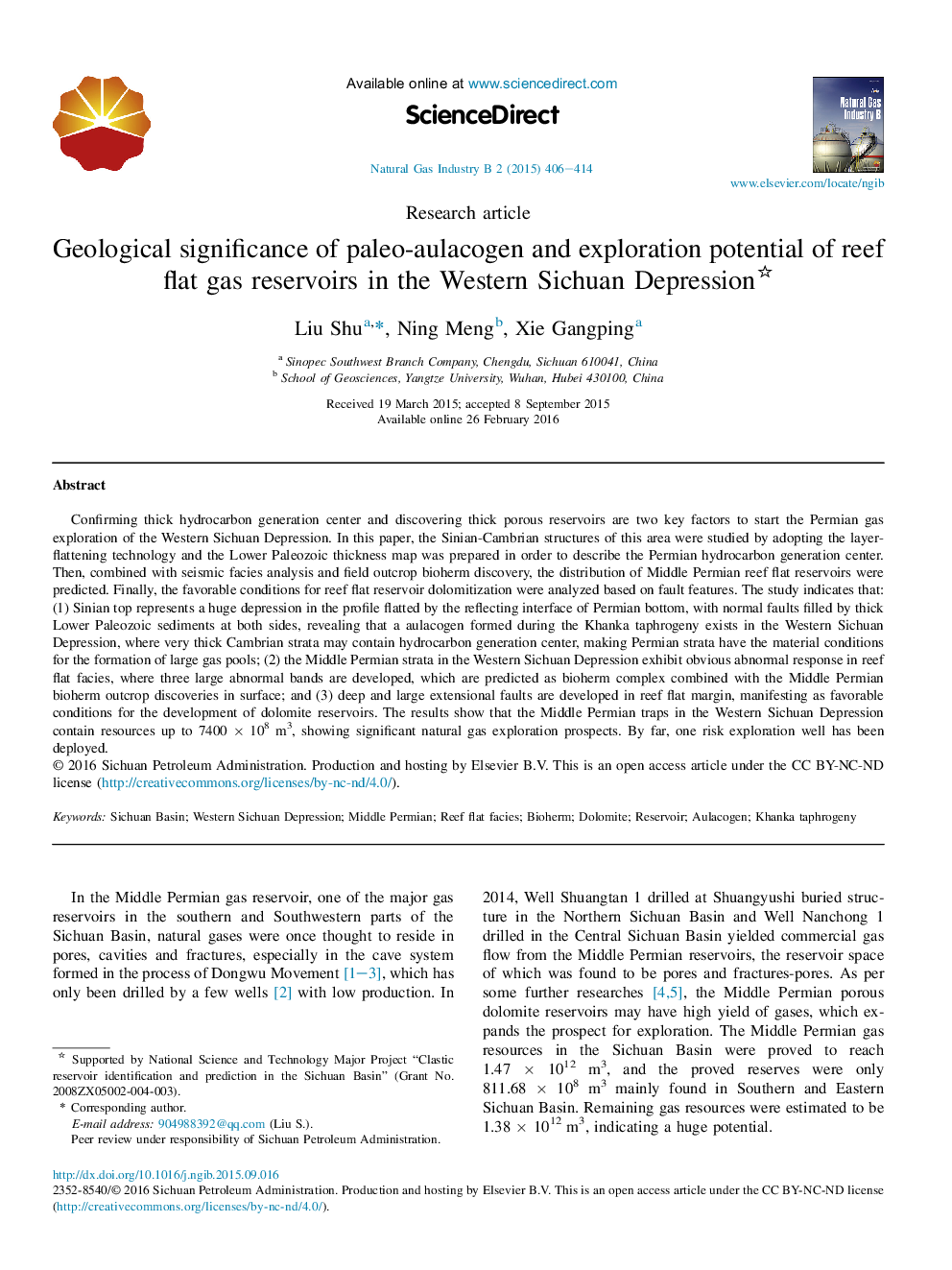| Article ID | Journal | Published Year | Pages | File Type |
|---|---|---|---|---|
| 1747812 | Natural Gas Industry B | 2015 | 9 Pages |
Confirming thick hydrocarbon generation center and discovering thick porous reservoirs are two key factors to start the Permian gas exploration of the Western Sichuan Depression. In this paper, the Sinian-Cambrian structures of this area were studied by adopting the layer-flattening technology and the Lower Paleozoic thickness map was prepared in order to describe the Permian hydrocarbon generation center. Then, combined with seismic facies analysis and field outcrop bioherm discovery, the distribution of Middle Permian reef flat reservoirs were predicted. Finally, the favorable conditions for reef flat reservoir dolomitization were analyzed based on fault features. The study indicates that: (1) Sinian top represents a huge depression in the profile flatted by the reflecting interface of Permian bottom, with normal faults filled by thick Lower Paleozoic sediments at both sides, revealing that a aulacogen formed during the Khanka taphrogeny exists in the Western Sichuan Depression, where very thick Cambrian strata may contain hydrocarbon generation center, making Permian strata have the material conditions for the formation of large gas pools; (2) the Middle Permian strata in the Western Sichuan Depression exhibit obvious abnormal response in reef flat facies, where three large abnormal bands are developed, which are predicted as bioherm complex combined with the Middle Permian bioherm outcrop discoveries in surface; and (3) deep and large extensional faults are developed in reef flat margin, manifesting as favorable conditions for the development of dolomite reservoirs. The results show that the Middle Permian traps in the Western Sichuan Depression contain resources up to 7400 × 108 m3, showing significant natural gas exploration prospects. By far, one risk exploration well has been deployed.
